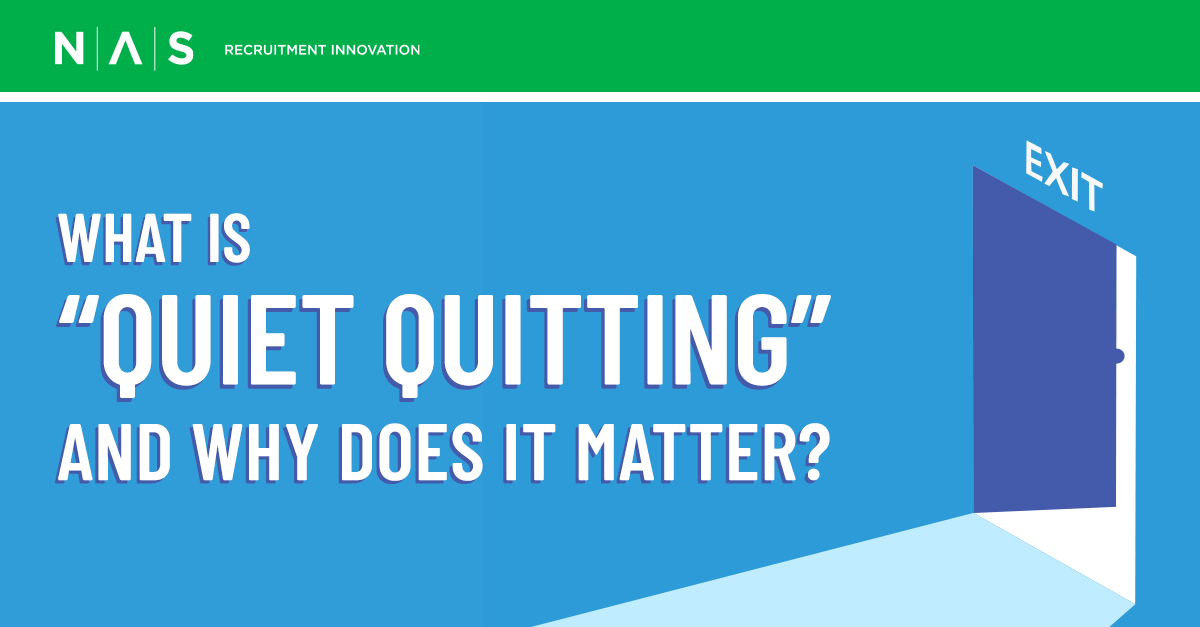-
What is Quiet Quitting and Why Does it Matter?
Posted by Laura Kleffner on August 25th, 2022 
The latest buzzword among the millennial and Gen Z workforce has reached the collective conscious this month as a recent Tik-Tok video made the rounds on social media. Quiet Quitting denotes a paradigm shift in moving from the hustle culture to a more balanced approach to work. It essentially occurs when employees are not outright quitting their jobs, but they are quitting the idea of going above and beyond. This movement has surfaced after the Great Resignation, when a record number of Americans left their jobs after the COVID-19 pandemic.
As a TA professional, what steps can you take to keep employees engaged and connected? How can you maintain a healthy work-life balance and company culture without pushing your employees to quiet quit?
Encourage your leaders to have regular weekly or bi-weekly check-ins with their teams
This may seem obvious, but a quick survey to leadership may paint an ugly picture of how often touch-bases go forgotten or neglected. With remote and hybrid work becoming the status quo, less watercooler conversations happen. Scheduling a regular meeting to check in with employees is crucial for any organization looking to maintain a strong, employee-focused company culture. This small step can help prevent turnover and aid in retention.
Stress the importance of work-life balance across your organization
Creating a company culture that values work-life balance is essential for reducing employee burnout. Given staffing shortages, supply chain stresses and numerous other factors putting strain on your employees, this matters now more than ever. Think of your employees’ time as a seesaw. At times, they have to manage their life outside of work during work hours, and during their off hours still have some overflow of work into their personal life. It’s a delicate balance ripe with gray areas. Take as flexible an approach as possible to your employees’ schedules, allowing for them to prioritize their life outside of work while remaining productive at work.
Provide upskilling, cross-skilling and reskilling opportunities
Upskilling has benefits for employers and employees. Upskilling provides a path and instills a sense of purpose and progress within your organization. Organizations benefit from cross-trained employees because they collectively help an organization advance and move forward. Learning and Development programs should be a priority for organizations to retain talent and fill vacant positions internally. Building a bench of qualified, skilled employees is a simple way to provide career opportunities internally.
Set goals and objectives that have a clear sense of purpose
No one wants to feel like another cog in the machine. “Quiet quitting” is born from a sentiment of not feeling seen or acknowledged for your contributions as an employee. Your organization’s overall goals need to tie back to the individual goals of each department and team member. When the goals of the individual tie back to that of the organization, much-needed context is provided regarding where the employee fits in and how that individual is essential to the company’s overall goals. When supervisors, managers and leaders meet with their teams, communicating the purpose and importance of the employee’s role is vital in keeping employee engagement high.
Whether your organization is small or large, quiet quitting can have a negative impact. Address the cause of quiet quitting to maintain a strong company culture and an engaged workforce. For more ideas on this topic or any other recruitment marketing strategies, feel free to reach out to our experts.
Laura Kleffner



